This post may contain affiliate links. Please see our disclosure policy.
Canning limeade (and limeade concentrate) is an easy way to always have fresh limeade on your pantry shelf. I keep a few jars of home-canned limeade in the refrigerator, and they’re always cold and ready when I come in from working in the garden on a hot summer day.
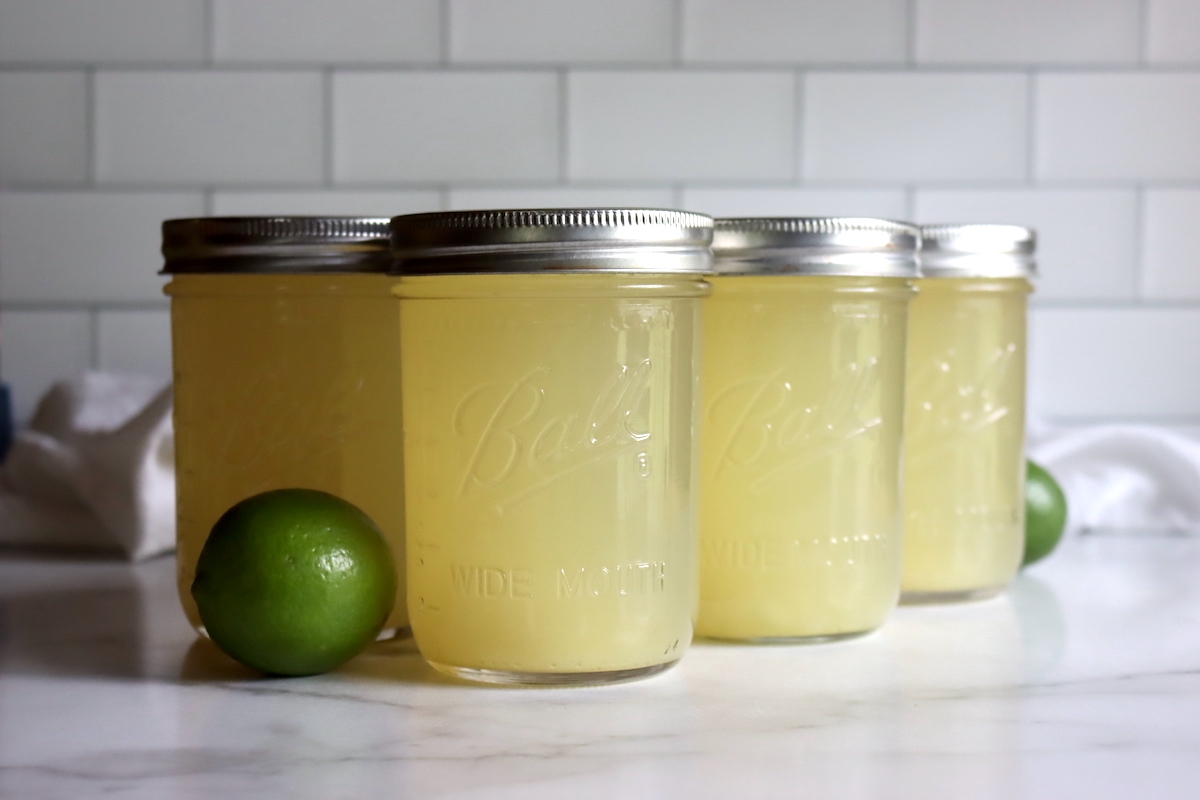
While I love lemonade all summer long, my husband is all about lime.
I put up plenty of cases of home-canned lemonade (& lemonade concentrate) each year, but I also have to put up the same amount of home-canned limeade too, just to be fair.
And now that I’m putting it up at home with fresh citrus (and occasionally, extra delicious key lime juice), I’ve found that I love limeade too…so now I’m putting up twice as much of it!
Is Canning Limeaid safe?
Limes are about as acidic as lemons on average, and you can generally use lime juice in place of lemon juice in canning recipes. Lemon juice ranges between a pH of 2 and 2.6, while lime juice is generally somewhere between a pH of 2 and 2.35. Key limes generally have a pH between 2.3 and 2.6, so they’ll also work.
Most canning recipes call for bottled lemon or bottled lime juice, and that’s because they’re using a small amount at a tested acidity to change the pH of fruits that are not quite acidic enough for canning as they are. Bottled cirtus juice is especially important in things like fig jam and persimmon jam, as both of those aren’t below the safe canning pH of 4.6.
When you’re canning limeade or limeade concentrate, there are no borderline fruits added, just high-acidity citrus. You can use fresh lime juice for this recipe.
The only thing to note here is that you cannot dilute the limeade beyond the recommended amount I specify in the recipe. Limeade concentrate is plenty acidic, because it’s only lime juice and sugar. Once you dilute it to make prepared limeade, you can’t go too far and make a “just a hint lime” drink because that won’t be acidic enough.
Most limeade recipes suggest the following prepared ratio, and that’s the minimum for safe canning:
- 1 cup lime juice
- 3/4 cup sugar
- 3 cups water I suggest adding
This results in a limeade with a good strong lime flavor, and just enough sweetness. Remember, you’ll probably be adding ice to the glass too, which will further dilute everything. (And you can always add more water at serving.)
Ingredients for Limeade Concentrate
To make 16 oz (two half-pint jars) of limeade concentrate, you will need the following ingredients:
- 2 cups lime juice
- 1 ½ cups sugar
For best results, use fresh lime juice as opposed to bottled lime juice. Not sure which lime variety to use? Persian limes are an optimal juice as they are large and juicy. Key limes can also be used, although they are smaller and contain considerably less juice, meaning you’ll need a lot of fresh key limes to make it work.
If you want to use key limes, I’d suggest using a high-quality bottled key lime juice, like Floribbean Key lime juice.
This recipe will yield two half-pint jars of limeade concentrate. Add 3 cups of water to one half-pint jar of concentrate to make 2 pints of fresh limeade. This recipe will yield a total of 16 oz of limeade concentrate or 4 pints (64 ounces) of regular limeade.
You can also put up prepared limeade using the following recipe:
- 2 cups lime juice
- 1 1/2 cup sugar
- 6 cups water
That should make about 4-pint jars of prepared limeade. Do not dilute further than this for canning, as it won’t be acidic enough to process properly. (You can, however, increase or decrease the sugar as much as you’d like.)
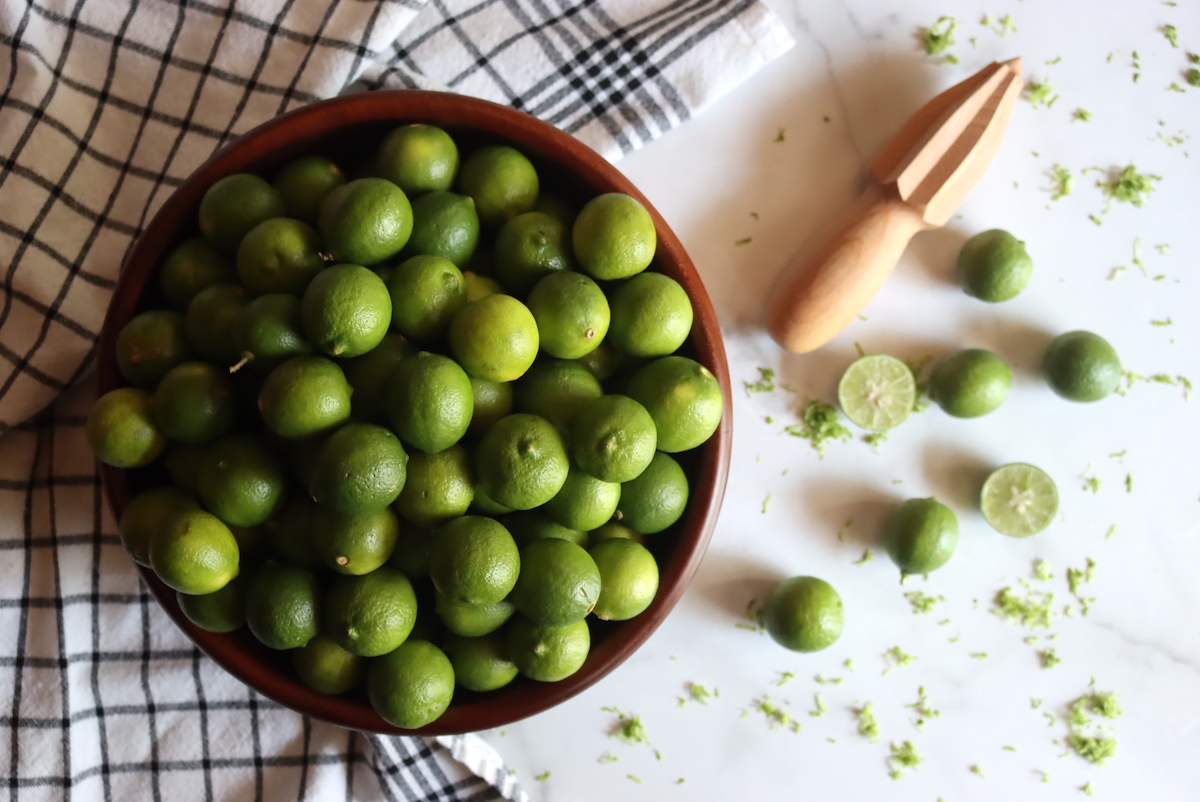
How to Make Limeade Concentrate
Making limeade for canning is simple, and all you really have to do is mix the lime juice with sugar and warm to around 190 degrees F before ladling into jars. (You can dilute to make prepared limeade too, following the recommended dilution rate.)
That said, if you are using fresh limes, you can get even more lime flavor if you zest the limes and allow the zest to infuse into the sugar before making the limeade.
To do this, zest the skins of a few organic limes and add the zest to your sugar to infuse their flavor. Stir and allow this zesty sugar mixture to sit for an hour or two.
Just remember – when adding lemon zest to your limeade, you’ll need to strain it out before pouring it into jars – any remaining pulp and seeds can turn bitter if left in the jars. Just make sure you pour the mixture through a fine mesh strainer when you’re ladling it into jars. The sugar will have dissolved, so you’ll only be filtering out the zest here.
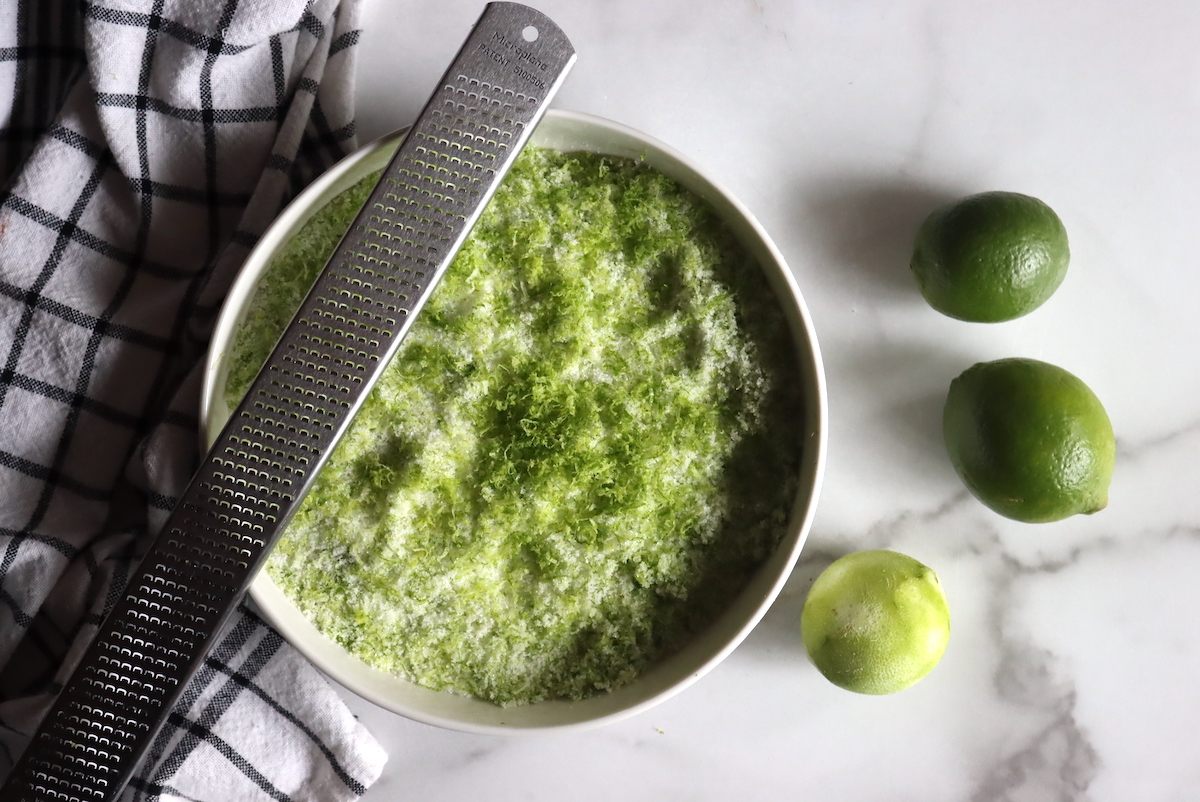
Before creating your limeade, start by sterilizing your lids and jars so you can immediately transfer your concentrate to prepared containers.
Begin by juicing your limes. To remove any seeds and pulp, pour the liquid through a fine mesh sieve. You’ll need about 2 cups of fresh lime juice.
Add the lime juice and sugar to a pan and warm gently until it reaches 190°F. Do not boil the mixture.
Immediately ladle the hot mixture into prepared canning jars (straining first if you added lime zest), leaving about ¼ inch headspace. Cap with 2-part canning lids and seal tightly.
If canning, process in a water bath canner for 10 to 20 minutes, depending on elevation. Process for 10 minutes if below 1,000 feet elevation, 15 minutes if between 1,000 and 6,000 feet, and 20 minutes for elevations above 6,000 feet.
Carefully remove and allow jars to cool on a towel. Check the seals after 12 to 24 hours.
Unsealed jars should be stored in the refrigerator once cooled to room temperature. Canned and sealed jars may be stored at room temperature for up to a year. Refrigerate after opening.
To make limeade, add 5 to 6 cups cold water to one-pint jar of concentrate (or 3 cups to one half-pint jar).
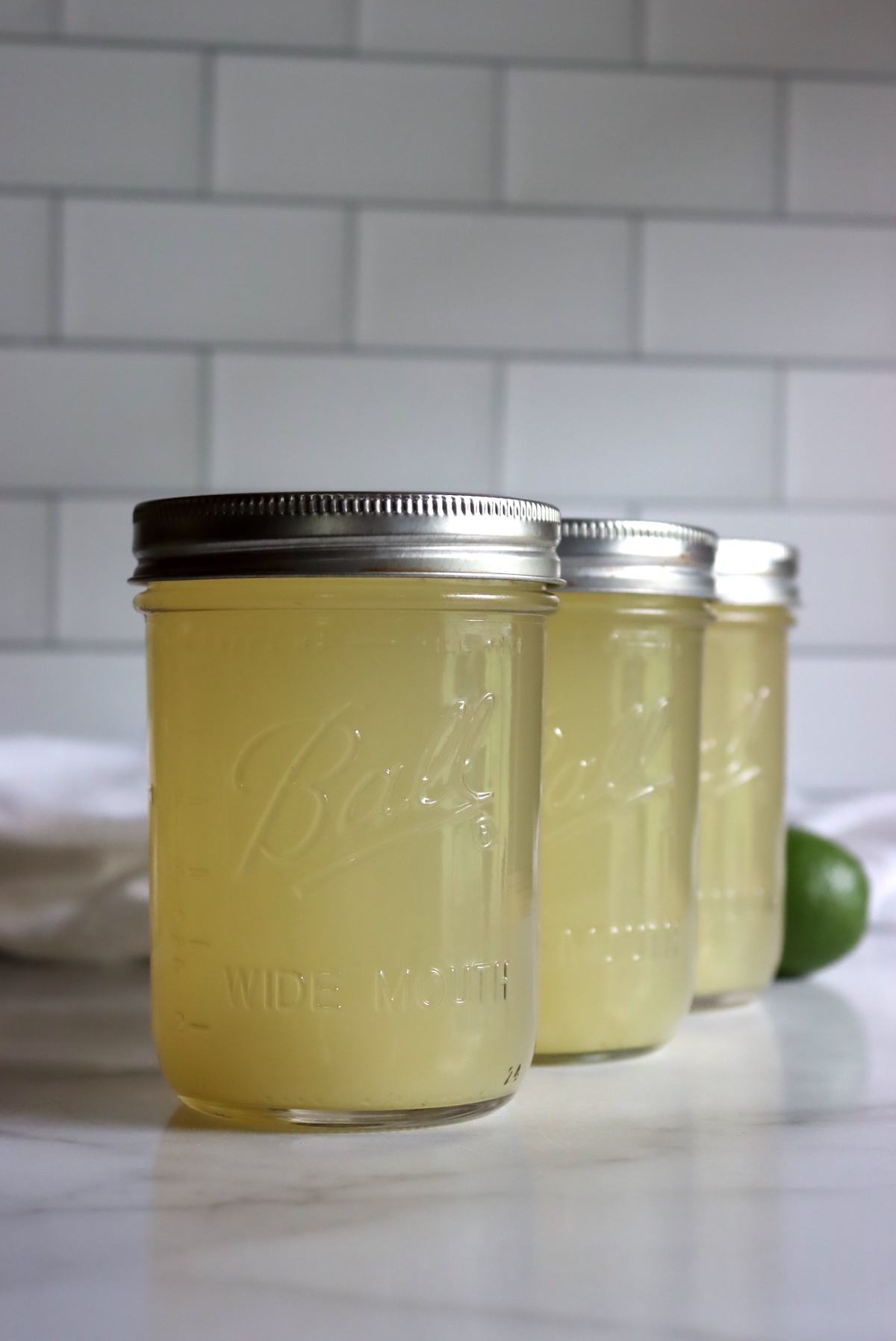
Limeade Concentrate Variations
Plain limeade is delicious, but there are other options too!
Sugar Variations
Sugar is unnecessary for canning and can be adjusted to meet individual tastes. Some may wish to lessen the sugar amount and substitute honey or maple syrup instead. This will work perfectly well with this recipe.
Other Variations
You may wish to add the juices of other fruits to your limeade concentrate. Lemon-limeade concentrate is a popular example made from the juice of both lemon and limes. Cherry-limeade and strawberry-limeade concentrate are some other options.
Regular Limeade
You can also use this recipe to make regular limeade, simply add 3 cups of water for every cup of lime juice. Just be aware, regular limeade will take up several times the space of limeade concentrate, so if you’re short on shelf space, you may wish to make limeade concentrate instead.
The main benefit of canning prepared limeade is that you can just put the home canned jars in the fridge as is in the morning, and then when you come in from working outside mid-afternoon they’re ready to go (and if you don’t need them, they just go back into the pantry unopened.)
Canning Limeade Concentrate
Canning limeade concentrate is entirely optional. It can be refrigerated for immediate consumption or frozen for use in the coming months.
To can limeade concentrate, sterilize jars and lids and prepare your water bath canner before making the concentrate.
Once made, immediately pour the hot liquid into prepared jars and process in a water bath canner for the appropriate amount of time depending on your elevation.
For elevations below 1,000 feet, 10 minutes will do. 15 minutes will be necessary if at 1,000 to 6,000 feet and 20 minutes for elevations above 6,000 feet.
Carefully remove from the water bath canner and place on a towel to cool.
Check the seals after 12 to 24 hours. Once sealed, your concentrate will be shelf-stable for 12 to 18 months when stored properly. Refrigerate after opening.
Ways to Use Limeade Concentrate
Limeade concentrate is always an enjoyable beverage to have on hand on a sweltering summer afternoon. Pop open a jar, mix with cold water and ice, and serve to your parched guests.
Limeade makes a great addition at picnics, barbecues, or just to sip on yourself after a long day of gardening.
Looking for some extra fizz at your next backyard gathering? Try adding ginger ale or seltzer to limeade for a sparkling refreshment or blend in fruit, like watermelon.
Additionally, frozen limeade can make some spectacular adult beverages when blended into cocktails or mocktails. Consider making limeade slushies for the little ones and frozen lime mojitos for the adults.
Food-wise, limeade concentrate can also be used to make a deliciously chilled key lime pie.
Limeade coolers and a slice of pie – sounds like quite the party, doesn’t it?
Ways to Preserve Limes
Looking for more ways to preserve limes?
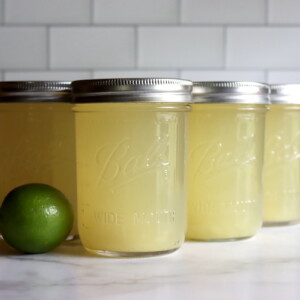
Canning Limeade (& Limeade Concentrate)
Equipment
Ingredients
For 2 half pint jars of limeade concentrate:
- 2 cups lime juice
- 1 ½ cup sugar
For 4 pint jars of prepared limeade:
- 2 cups lime juice
- 1 1/2 cup sugar
- 6 cups water
Instructions
- Begin by preparing jars, lids, and a water bath canner before making the concentrate.
- To infuse more flavor into your limeade, you may wish to use lime zest. Zest the skins of a few organic limes and mix in with your sugar, allowing this mixture to rest for an hour or two so the limes can impart their flavor into the sugar. Remember, you’ll need to strain your concentrate before canning when adding lime zest.
- To make your limeade concentrate, juice your limes and strain the pulp from the liquid (pulp can turn bitter when canned). You’ll need about 2 cups of fresh lime juice.
- Add lime juice and sugar to a pot or saucepan. (If making limeade instead of limeade concentrate, add in 3 cups of water for every cup of lime juice).
- Do not boil the mixture, but gently warm to a temperature of 190°F.
- Ladle the hot mixture into prepared canning jars (straining first if you added lime zest), being sure to leave ¼ inch headspace. Seal with 2-part canning lids and process in a water bath canner for 10 to 20 minutes, depending on elevation. Process for 10 minutes if below 1,000 feet elevation, 15 minutes if between 1,000 and 6,000 feet, and 20 minutes for elevations above 6,000 feet.
- Once processing, carefully remove jars and place on a towel to cool. Check your seals after 12 to 24 hours. Unsealed jars should be refrigerated or frozen once cooled to room temperature. Canned jars may be stored at room temperature and refrigerated once opened.
Notes
- 2 cups lime juice
- 1 1/2 cup sugar
- 6 cups water
Nutrition
Nutrition information is automatically calculated, so should only be used as an approximation.
Drink Canning Recipes
Looking for more drink canning recipes?
- Canning Lemonade (and Lemonade Concentrate)
- Canning Strawberry Lemonade Concentrate
- Canning Berry Juice
- Canning Rhubarb Juice
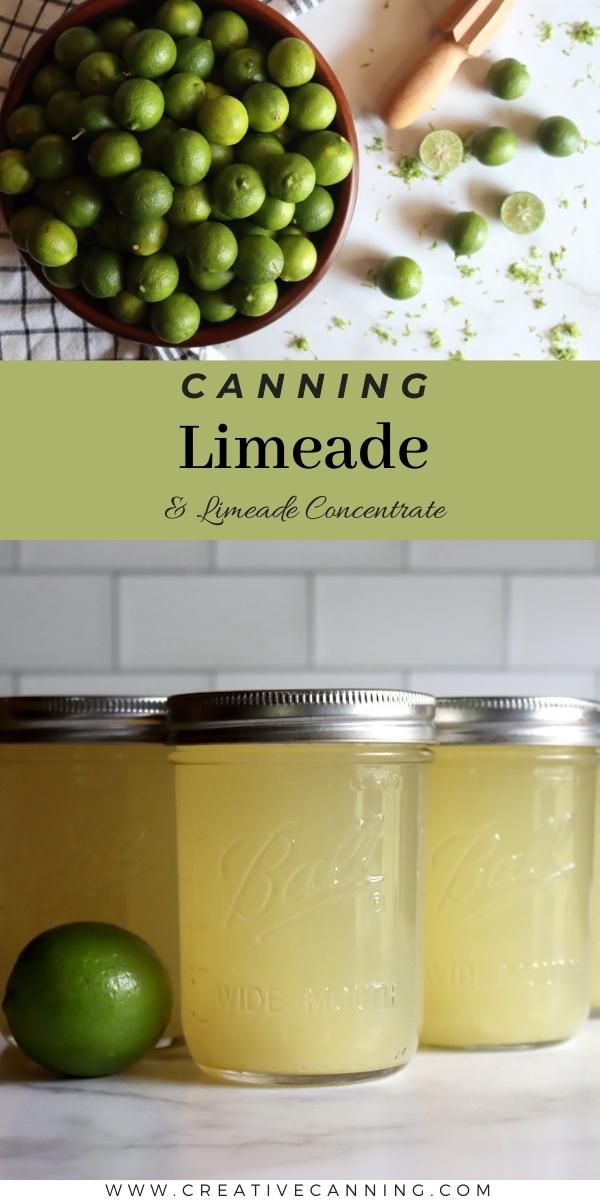
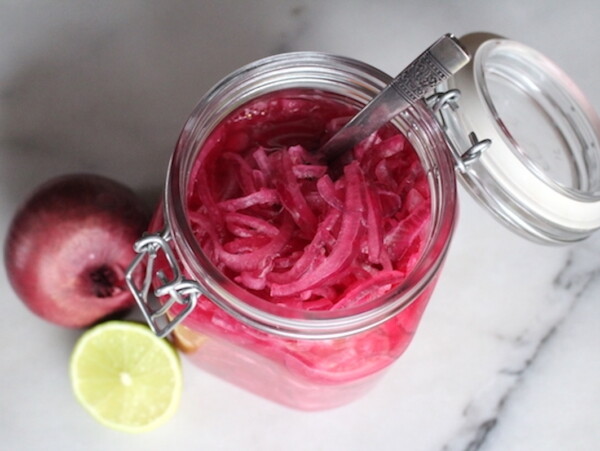
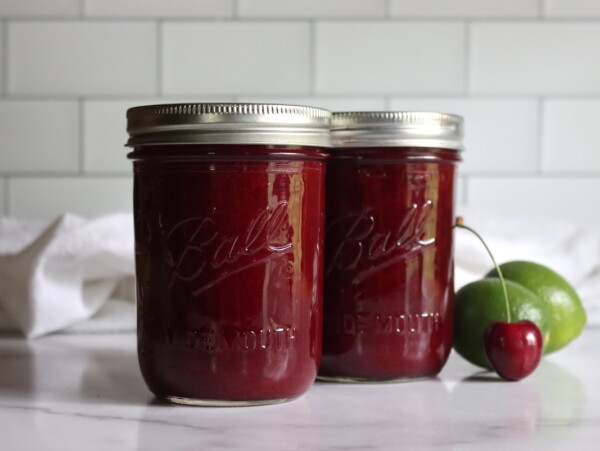
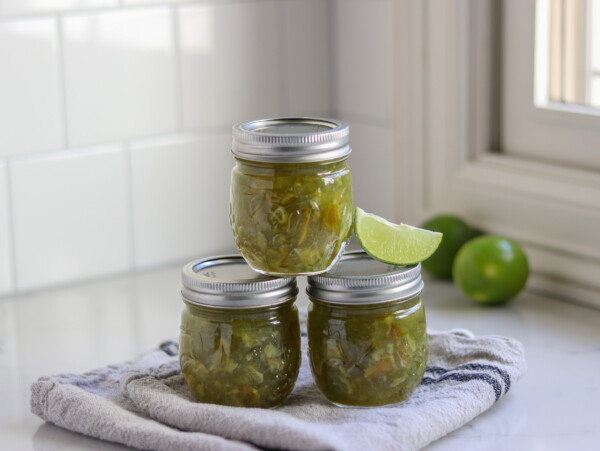
This is the first thing I water bath canned. Thank you for the thorough instructions. I have tons of limes from our tree and I was looking for more ideas other than freezing all of the lime juice. The limeade concentrate I made doesn’t freeze completely solid, so I will stick with canning it now.
Lovely, so glad you enjoyed it!
Perfect recipe!!
So glad you enjoyed it!
Having a hard time finding a recipe for canning just lime juice, Is it safe to water bath can alone?
Yes, it’s perfectly fine to water bath can alone. Use the same instructions.
Used the concentrate with homemade blueberry syrup. Good will be making more.
Wonderful! Glad you enjoyed it.
Can I make the concentrate if I leave out all sugar or sugar substitute?
Yes. The concentrate without sugar would be just canned lime juice, and that’s totally fine.